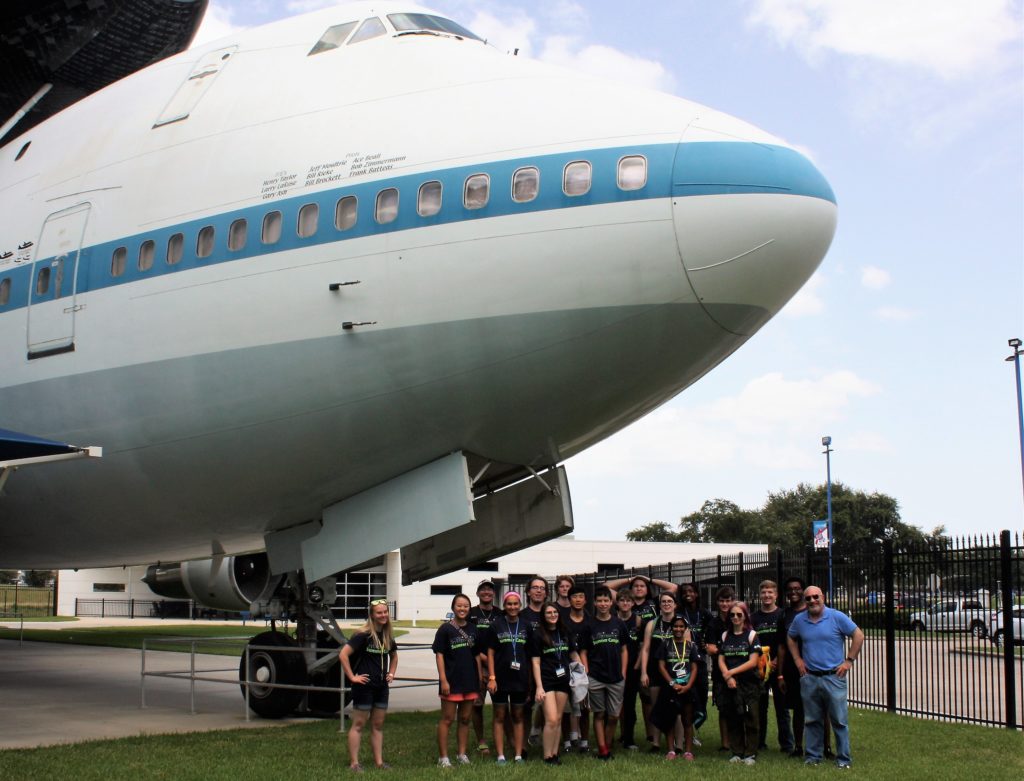STEM Outreach: The Power of Giving Back

When the first group of students entered the auditorium, a sense of nervous anticipation hit me. While I had made many presentations to professional groups and university students, I had never attempted to share my passion for engineering to such a young audience. It was February 1988, Engineers Week, and I was with a group of engineers and we were about to speak to middle school students about careers in engineering and technology.
I had organized a group of six engineers representing Northrop Aircraft, Parsons Corporation, Southern California Edison and the Jet Propulsion Laboratory and our goal was simple; introduce the students to how engineering and technology make the world a better place. We spent the entire day at the school as different classes rotated into the auditorium.
This young audience was new to me and I wondered if we would hold their attention. Would we be able to share the wonders of engineering? Would they understand what we do? Would they ask questions? And would they have fun? So you can understand my nervousness.
Soon after we started, that nervousness disappeared and turned into excitement and exhilaration. We were very prepared, and while we didn’t have hands-on activities, we had something just as important . . . Our own stories. All but one of us had come from families where we were the first generation to go to college and we all were what you would consider young professionals. We explained how we got interested in engineering, our college experiences, the work we did and why engineering and technology could be great careers for them.
The students were so excited and they asked many good and insightful questions. We knew we had an impact when the teachers shared the essays the students wrote following the session. We had succeeded in creating a strong awareness of engineering and having these students see themselves as engineers. For me, I was hooked. I knew that I would be doing more of these activities in the future.
It became very clear to me that as engineers, we not only had a responsibility to our employers we also had an obligation to the profession. Inspiring the next generation to see themselves as engineers was and is critically important to the health, safety and security of society. Since that day in 1988, I have either through professional or volunteer activities, had the opportunity to engage with thousands of students about engineering and technology. Being an engineer, it’s one of the things I’m most proud of and I want to help other engineers share in that experience.
STEM education; it didn’t have that name back then; has come a long way. While there are many resources available to aid STEM professionals who want to engage pre-university students, many don’t know where or how to start. Today, this mission is even more important than ever and IEEE as an organization, with its volunteers serving as its ambassadors, is very invested in this task. Advancing Technology for Humanity requires a pipeline of diverse and talented students to choose careers in engineering, computing and technology who will solve the challenges of tomorrow.
As a result, collectively each year thousands of IEEE volunteers, operating through their local and technical communities conduct hundreds of STEM outreach activities. For me, in my capacity as an IEEE staff member in Educational Activities, supporting volunteers like you is a top priority. My own experiences and the feedback from STEM volunteers demonstrated the need to provide more resources and guidance to help you create or enhance your own outreach programs in order to impact as many students as possible.
For that reason we are introducing the IEEE Volunteer STEM Portal (coming soon!) . . . A new resource designed by STEM volunteers and staff with you in mind. The Portal is a “go-to” resource for IEEE volunteers and operating units where you will have access to a searchable library of volunteer created STEM programs and “how-to” resources to make it easier for you to develop and implement STEM outreach programs. You will also, through the portal, have the opportunity to share the results of your program and help other volunteers learn from your efforts how to provide effective, engaging and fun STEM activities.
When I look back on my first STEM visit, it provides an enduring memory of the impact we as engineers and technology professionals can have on the next generation. Seeing the excitement in a student’s face when you know you made a STEM connection and they understand the wonders of engineering and technology is as professionally satisfying as completing a difficult work project. So whether you are an experienced STEM volunteer or just starting out, I urge you to explore the resources on the STEM Portal so you too can: Share. Give back. And Inspire the next generation of STEM professionals.
Author: Burt Dicht, CAE
Director, Student & Academic Education Programs
IEEE Educational Activities












